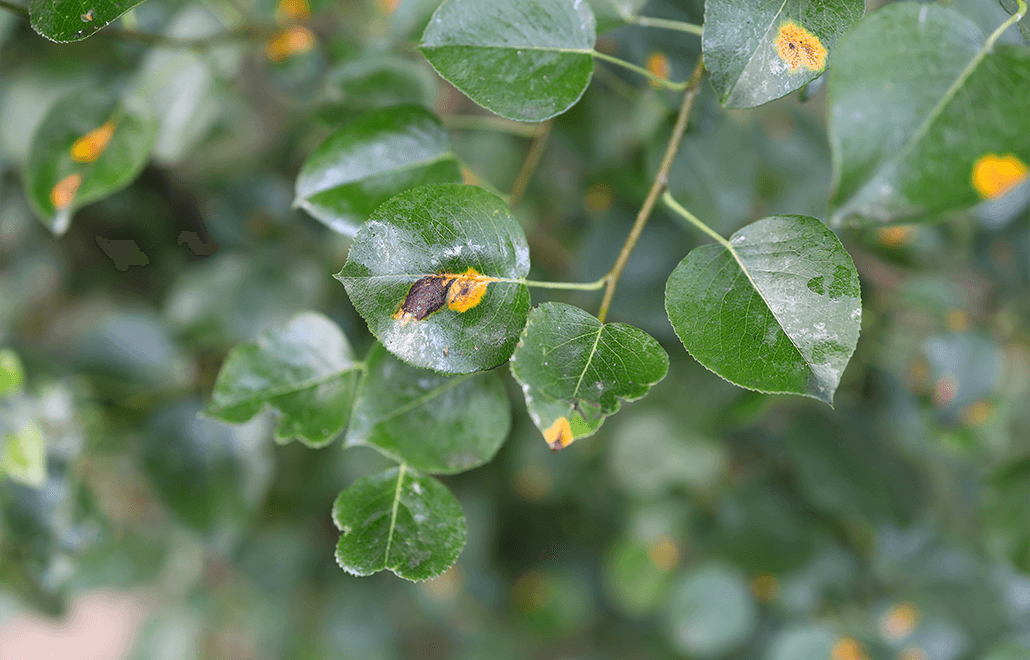
14 Sep 7 Signs That Your Tree May Be Sick
As a homeowner, one of your primary responsibilities is to maintain your property, including the trees. Trees are a beautiful and valuable addition to your landscape, but like any living organism, they can get sick. Spotting a sick tree can be challenging, especially if you’re not familiar with the warning signs. In this blog, we’ll look at some of the common symptoms that indicate a tree is sick.
Discolored Leaves
One of the most apparent signs that a tree is sick is a change in leaf color. Healthy trees have vibrant, green leaves, while sick trees may have yellow, brown, or wilted leaves. Discoloration can occur due to various reasons, including lack of nutrients, pests, and diseases. If you notice a sudden change in your tree’s leaf color, it’s essential to investigate the cause.
Dead or Falling Branches
Dead or falling branches are another sign that a tree is sick. Trees naturally shed branches, but excessive or sudden branch loss can indicate a more severe problem. Dead branches can be a safety hazard, as they can fall and cause injury or property damage. If you notice dead or falling branches on your tree, it’s crucial to have a professional arborist inspect it.
Fungal Growth
Fungal growth is a clear indication that a tree is sick. Fungi can grow on the bark, leaves, or roots of a tree and can cause damage to the tree’s internal systems. Common fungal growth includes mushrooms, conks, and cankers. If you notice any fungal growth on your tree, it’s essential to seek professional help immediately, as some fungi can be harmful to humans and animals.
Cracks or Cavities on the Bark
Cracks or cavities on a tree’s bark can indicate that the tree is experiencing internal decay. As the tree’s structural integrity weakens, it becomes more susceptible to falling or breaking during a storm. Cracks and cavities can also provide a home for pests and fungi, leading to further damage. If you notice any cracks or cavities on your tree’s bark, have it inspected by an arborist.
Stunted Growth
If your tree is not growing as it should, it’s likely that it’s suffering from a problem. Stunted growth can be due to various factors, including poor soil quality, pests, and diseases. A lack of growth can also indicate that the tree is not receiving the necessary nutrients it needs to thrive.
Insect Infestations
Insect infestations can cause severe damage to a tree and are a clear indication that the tree is sick. Common pests that infest trees include bark beetles, borers, and aphids. These insects can cause extensive damage to a tree’s internal systems, leading to stunted growth, yellowing leaves, and death.
Drooping or Wilting Leaves
Drooping or wilting leaves can indicate that the tree is not receiving enough water or nutrients. However, it can also indicate that the tree is suffering from a pest or disease problem. If you notice drooping or wilting leaves on your tree, it’s essential to investigate the cause.
In conclusion, recognizing the signs of a sick tree is crucial to its health and your safety. If you notice any of the symptoms mentioned above, it’s essential to contact a professional arborist. They have the necessary expertise to diagnose and treat the problem, ensuring your tree remains healthy and beautiful. Regular tree maintenance and inspection can help prevent a tree from getting sick, so it’s essential to prioritize tree care to maintain a beautiful and safe landscape.
About Price Right Professional Landscaping & Tree Service
If you have questions about a potentially sick tree, please get in touch for a free consultation. At Price Right Professional Landscaping & Tree Service, we have a team of dedicated professionals providing professional tree services & stump grinding and removal. We want to be your Arborist. Our customer reviews speak for our services because we always get the right price and exceed our customer’s vision for the project. For more information, contact us at 18176758565, write to info@pricerighttrees.com or fill out our contact form.

